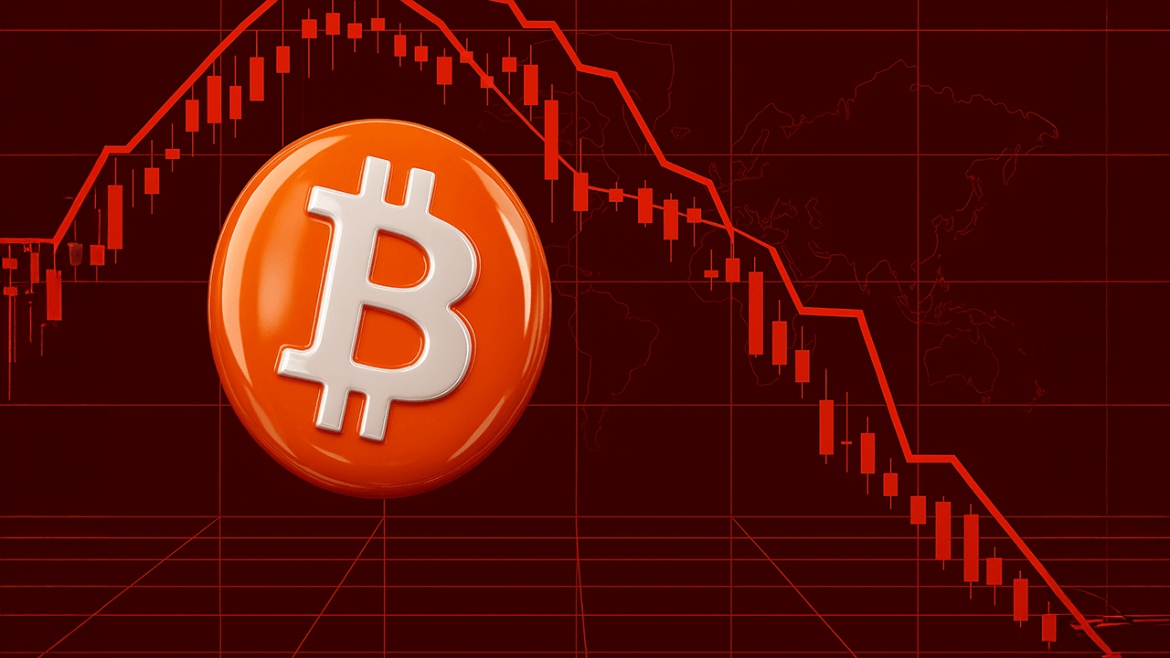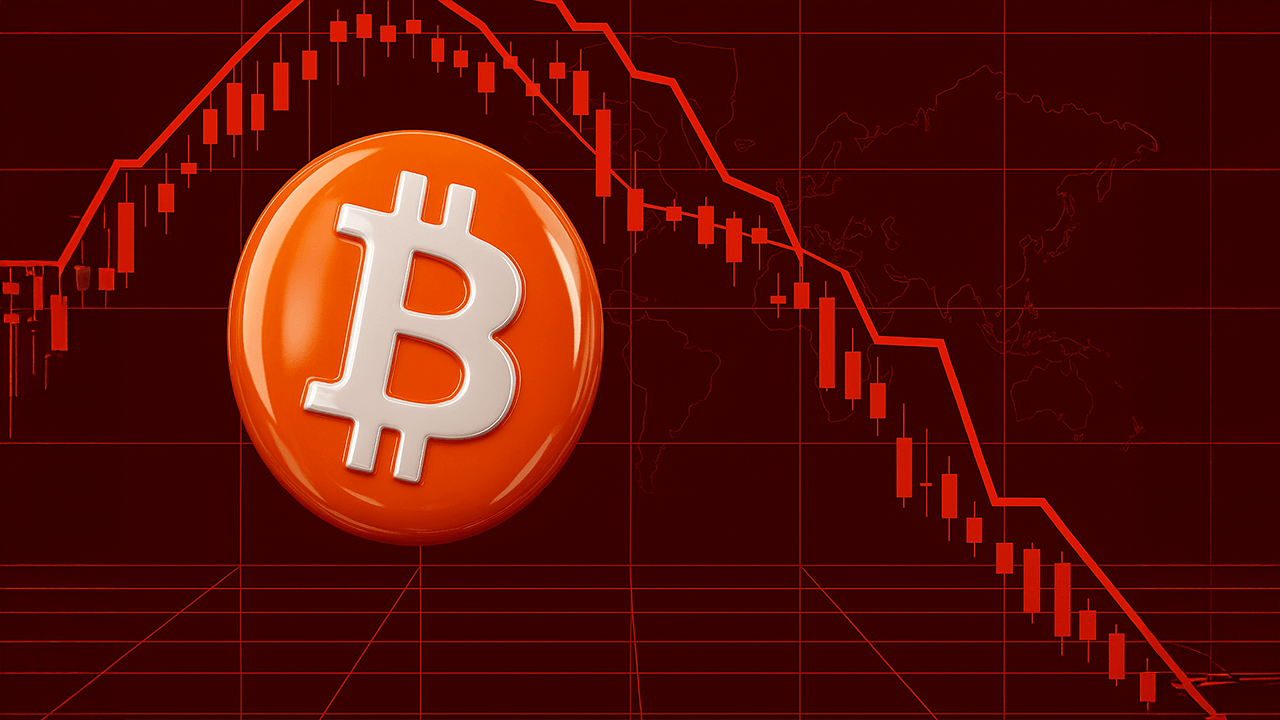Unpacking the Crypto Carnage: A Comprehensive Analysis
Introduction: The Storm in the Crypto Market
The cryptocurrency market, known for its wild swings and dramatic price movements, recently experienced a severe downturn that left investors reeling. The week’s market bloodbath saw billions of dollars wiped off the market cap, with major cryptocurrencies like Bitcoin and Ethereum suffering significant losses. This report delves into the factors behind this market turmoil, examines the performance of key cryptocurrencies, and explores what the future might hold for the crypto landscape.
The Macroeconomic Mayhem: A Perfect Storm
The recent crypto crash was not an isolated event but rather a symptom of broader macroeconomic uncertainties. Several key factors contributed to the market’s downward spiral:
Interest Rate Fears and the Federal Reserve
The U.S. Federal Reserve’s stance on interest rates has been a significant driver of market sentiment. The anticipation of potential interest rate hikes has strengthened the U.S. dollar, making riskier assets like cryptocurrencies less attractive. Investors tend to flock to safer havens like the dollar when interest rates are expected to rise, leading to a sell-off in crypto assets.
Inflation Concerns and Rising Treasury Yields
Persistent inflation has also played a role in the market’s woes. Rising Treasury yields, often a sign of inflationary pressure, have contributed to a risk-off sentiment. Investors are wary of central banks tightening monetary policy to combat inflation, which could slow economic growth and negatively impact risk assets like cryptocurrencies.
Global Economic Uncertainty
Geopolitical tensions and economic uncertainties around the world have added to the market’s volatility. Conflicts, trade disputes, and economic slowdowns in major economies have all contributed to a climate of uncertainty, making investors more cautious and risk-averse.
Bitcoin’s Bumpy Ride: Resilience Amid the Storm
Bitcoin, the flagship cryptocurrency, has long been considered a safe haven within the crypto market. However, even Bitcoin was not immune to the recent downturn. The price of Bitcoin plummeted to below $105,000 before recovering slightly to trade above $113,300. This volatility served as a stark reminder that no cryptocurrency is entirely immune to broader market pressures.
Market Dominance Shifts
Despite the weekly losses, Bitcoin’s market dominance saw interesting shifts. At one point, Bitcoin’s dominance briefly hit 60%, indicating that investors were rotating from altcoins back into the relative safety of Bitcoin amid the market turmoil. However, more recent data suggests this dominance has begun to fall again, signaling a potential resurgence in altcoin activity.
Institutional Interest and Long-Term Outlook
Despite the short-term volatility, Bitcoin continues to attract institutional interest. Major financial institutions and corporations are increasingly recognizing Bitcoin as a legitimate asset class, which could provide a long-term bullish outlook for the cryptocurrency. The recent downturn may present an opportunity for institutional investors to accumulate Bitcoin at discounted prices.
Altcoins Under Pressure: A Tale of Two Markets
While Bitcoin weathered the storm with relative stability, altcoins experienced a more severe beating. Ethereum (ETH), the second-largest cryptocurrency, saw a significant decline, alongside other prominent altcoins like XRP and Solana. The magnitude of these losses underscores the higher risk profile associated with altcoins, which tend to be more susceptible to market fluctuations than Bitcoin.
The Altcoin Dilemma
Altcoins often exhibit higher beta, meaning their price movements are more exaggerated than Bitcoin’s in both directions. This higher volatility can lead to significant gains during bull markets but also substantial losses during downturns. Negative news or developments specific to individual altcoins can trigger sharp price drops, especially in a risk-off environment.
Exceptions to the Rule
Despite the overall downturn, some altcoins managed to buck the trend. TRX, for example, saw a rise, demonstrating that certain altcoins can still thrive even during market downturns. POKT and LPT also defied the downtrend, suggesting that projects with unique value propositions or strong community support can withstand market volatility better than others.
Liquidations and Market Sentiment: A Vicious Cycle
The recent crypto crash triggered a wave of liquidations, further exacerbating the downward pressure on prices. Over $692 million in liquidations occurred across the crypto market, with Bitcoin and Ethereum leading the losses. This phenomenon highlights the risks associated with leveraged trading, where even small price movements can result in significant losses and forced liquidations.
The Crypto Fear & Greed Index
Market sentiment also played a crucial role in the downturn. The Crypto Fear & Greed Index, a measure of market sentiment, remained neutral, indicating a lack of strong bullish or bearish conviction among investors. The combination of macroeconomic uncertainty, price declines, and liquidations created a climate of fear and risk aversion, leading many investors to reduce their exposure to cryptocurrencies.
Analyzing the Broader Implications: What Lies Ahead
The recent crypto market downturn has several important implications for the future of the industry:
Increased Regulatory Scrutiny
Market crashes tend to attract greater regulatory scrutiny. Governments and financial authorities may become more inclined to implement stricter regulations on the crypto market to protect investors and prevent future crises. This could lead to a more regulated and stable crypto market in the long run.
Flight to Quality
During times of market turmoil, investors often flock to established and liquid assets. This trend could benefit Bitcoin and other major cryptocurrencies with strong track records and deep liquidity. Smaller altcoins may struggle to regain investor confidence until the market stabilizes.
Opportunity for Accumulation
For long-term investors, market crashes can present opportunities to accumulate cryptocurrencies at discounted prices. However, it’s essential to conduct thorough research and carefully assess the risks before making any investment decisions. The recent downturn may provide a unique buying opportunity for those with a long-term perspective.
Innovation and Development
Despite the price volatility, the underlying technology and innovation driving the crypto industry remain strong. The downturn could lead to increased focus on developing more robust and scalable blockchain solutions. Projects that can demonstrate real-world utility and strong fundamentals may emerge as winners in the long run.
Macroeconomic Factors to Watch: Navigating the Uncertainty
As the crypto market navigates this period of uncertainty, several key macroeconomic events warrant close attention:
U.S. Federal Reserve Decision
The Fed’s decision regarding interest rates on December 18th is poised to be a significant market-moving event. Any indication of a more hawkish stance could trigger further downside pressure on crypto prices. Investors will be closely watching for any signals from the Fed that could impact the market’s trajectory.
Inflation Data
Monitoring inflation data will be crucial in assessing the potential for further interest rate hikes. Higher-than-expected inflation readings could reinforce expectations of tighter monetary policy, leading to a more risk-off sentiment in the crypto market.
Geopolitical Risks
Geopolitical tensions and uncertainties can also impact global markets, including cryptocurrencies. Any escalation of conflicts or trade disputes could trigger risk-off sentiment and negatively affect crypto prices. Investors should remain vigilant and monitor geopolitical developments closely.
The Road Ahead: Navigating the Crypto Landscape
Predicting the future of the crypto market is notoriously difficult. However, by carefully analyzing the underlying trends and macroeconomic factors, investors can make more informed decisions. The recent downturn serves as a reminder that the crypto market is not immune to risk and that volatility is an inherent characteristic of this asset class.
Market Corrections and Long-Term Growth
Market corrections are a normal part of the investment cycle. While they can be painful in the short term, they can also create opportunities for long-term growth and innovation. The crypto industry has demonstrated remarkable resilience in the past, and there is reason to believe that it will continue to evolve and adapt to the challenges ahead.
The Transformative Potential of Blockchain
Despite the inherent risks, the transformative potential of blockchain technology and cryptocurrencies remains undeniable. The recent downturn may ultimately prove to be a necessary growing pain for the industry. As the market matures and institutional adoption increases, we can expect to see greater stability and resilience in the years to come.
Conclusion: A Resilient Future?
The recent crypto carnage, while unsettling, may ultimately prove to be a necessary growing pain for the industry. The market’s ability to weather this storm will depend on a combination of factors, including macroeconomic developments, regulatory clarity, and continued innovation. Despite the inherent risks, the transformative potential of blockchain technology and cryptocurrencies remains undeniable. As the market matures and institutional adoption increases, we can expect to see greater stability and resilience in the years to come. The journey may be turbulent, but the destination could reshape the future of finance and technology.





